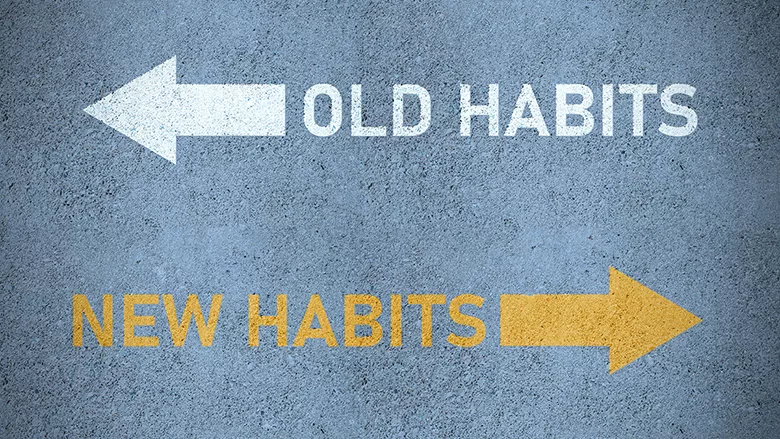How to Identify and Break Restoration Business Owner Dependency Issues

Photo credit: olaser / iStock / Getty Images Plus via Getty Images
It’s been said that the first step to recovery is admitting you have a problem. This past year I took a concerning call from a successful businessman, and his first words were, “I have a problem.” His problem specifically was feeling burned out and not seeing a clear way to effectively exit his business.
He went on to explain how the pain and stress associated with running the business was so great that he was willing to GIVE it away just so he didn’t have to endure going to work anymore. This really got me wondering how someone could feel so horribly about something they had spent a lifetime creating and if there was a way to keep it from happening.
I wish I could say this was an isolated incident. However, we have seen an increasing amount of these types of situations in recent years. While each condition has been different, they were certainly not isolated, nor were they driven by social or economic influences. They were all self-induced prophecies that could have been avoided with a bit of planning and foresight.
The problem, in its most simplistic form, is dependency. This is similar to drugs or alcohol where you have a substance and a user, and the user is dependent on the substance. Here, we have an owner and their business where both can be dependent on each other. What starts off as a well-intended, symbiotic relationship between form and function grows into a codependent trap of financial, procedural, and emotional addictions doomed to repeat themselves. If this sounds scary, that’s because it is!
The worst part about this scenario is how it develops under the guise of hard work, where the owner pours their heart and soul into the business through “command and control” leadership. In this scenario, sales are driven through the personal relationships of the owner and a handful of loyal clients. Most of the important decisions about an operation funnel back to the person whose name is on the charter.
In some cases, I’ve seen where even the most routine project-level choices, such as purchasing, scheduling, or resource allocation, ultimately fall into the lap of the owner. There are no real managers in the organization, only doers who carry out their daily instructions with very little autonomy and even less accountability.
Avoiding Making the Owner the Business
When all the authority remains at the top of the organizational chart, complacency reigns. Business development efforts are stifled. Budgets are ignored (if they were even created). And processes are non-existent and certainly not documented. The business IS literally the owner with one identity that it can’t survive without.
The ways to avoid this involve several different business disciplines. They begin with clearly delineating a difference between owner and business. The business must have its own identity independent of the owner’s day-to-day involvement. This is one of the reasons businesses are referred to in the third person as “it” instead of “us” or “we.” If this routine is established early and reinforced, it becomes second nature to the employees and they think in terms of working for an organization rather than an individual or group of individuals.
Next in order are the business processes. While there are thousands of processes that are executed on a daily basis, not all of them need to be documented, just the key ones that involve decision making that can and should be independent of the owner. Personally, I’m a fan of doing this with process maps instead of written standard operating procedures (see the 2016 article “Standard Operating Procedures Made Simple”).
These process maps are developed in a cross functional flowchart format with the most critical component (the resources) displayed as rows along the leading edge of the chart. If an activity is listed in a particular resource’s row, it means they are responsible for executing the activity to verifiable standards that have been established. This creates not only accountability but authority as well. Documented processes also ensure consistency of service delivery and standards for levels of quality.
Communicating Expectations
Once the business has an identity and processes, the last step is to train and develop the resources (people) who execute and make the decisions. One of the most common causes for failure in this step is the lack of communication surrounding performance expectations. Most employees want to perform at a level that often exceeds even the owner’s expectations. However, if they don’t know what the expectation is or how it is measured, they often fall short, even if their intentions are good.
To effectively manage performance, owners must communicate their expectations clearly and reinforce them routinely. A recent example of this from a client of mine involved a project manager who was the top producer at the company, but who often failed to follow through with documenting change orders on his projects. This would routinely lead to payment disputes with customers and insurance carriers, ultimately extending receivables.
When I asked the project manager what the standard of performance was for the collection of final payment after a completed project, he couldn’t tell me. Furthermore, when I asked him what necessitated the use of written change orders on a project, he responded by saying, “We don’t use those. Our word is our bond with our customers!”
It wasn’t until I showed an aging report to the owner and project manager together that they both could appreciate the negative impact of undocumented changes on a project and the financial cost of carrying those projects for 60, 90, and even 180 days at times. The numbers were staggering. Needless to say, things changed immediately and improvement was not only gained but also self-managed by the project manager once he fully understood the criteria for how his performance was measured.
All of this does not go without training and professional development. If true autonomy at the producing ranks of an organization is to be achieved, it must come with the education to do so. If employees are expected to perform like professionals, they must study like them. Promoting this philosophy of being a student of their trade should always be a key component of the owner’s plan. Eventually, these employees will need to be part of a succession plan for the owner, something which is not possible without the knowledge and skills necessary to break the bonds of dependency.
Financial and Emotional Dependency
Up to this point, we have focused on a business’s dependency on the owner. The other dependency situation occurs when the owner has set themselves up to be dependent on the business. The primary source of this dependency is usually financial but can also be emotional. While the two are very different, they are equally destructive and lead to the same trap of being stuck in the business with no apparent way out.
The financial dependency I have observed with business owners has often been driven by one of two primary motivators. The first is the development of an unrealistic and unsustainable lifestyle, which creeps in at about the time when the business starts to achieve a level of success that exceeds what the owner originally anticipated. This often leads to excess cash that the owner doesn’t know what to do with.
Lifestyle creep sets in and funds that should have been set aside for reserve or investment are spent frivolously on items that bring little to no return. The demands of the owner’s new lifestyle only increase over time and soon become entitlements rather than rewards, creating a cash demand on the business that cannot be sustained, especially during lean times or times when capital reinvestment is necessary.
The second motivator is a well-intended but misguided approach to avoiding taxes, which can come from multiple sources including peers, family members, or even the owner’s accountant. In this scenario, personal expenses are excessively incurred through the business in an attempt to avoid income taxes. This becomes especially problematic when the majority of an owner’s income is irresponsibly expensed through the business. If it gets to the point where sustaining the owner’s income is only possible by this method, remedies are often limited to the liquidation of both personal and business assets.
The solution to this scenario is very simple. Owners must live within the means of reasonable W2 wages, while reserving dividends and distributions for long-term investments. They must keep their personal finances separate from the business and not use the business’s bank account as their personal piggy bank.
Small businesses are a reflection of their owners. But they don’t have to share the same identity. Potential buyers or successors of a business do not want to acquire entities with these dependency issues. They are looking for clean and clear separation between the two parties. They place real value in a brand that stands on its own, is system driven with consistent and sustainable results, and produces measurable results to both the top and bottom lines. Achieving this requires planning and good discipline. Stop the addiction before it starts and you will realize the financial rewards and peace of mind when you decide that your entrepreneurial journey has come to an end.
Looking for a reprint of this article?
From high-res PDFs to custom plaques, order your copy today!








